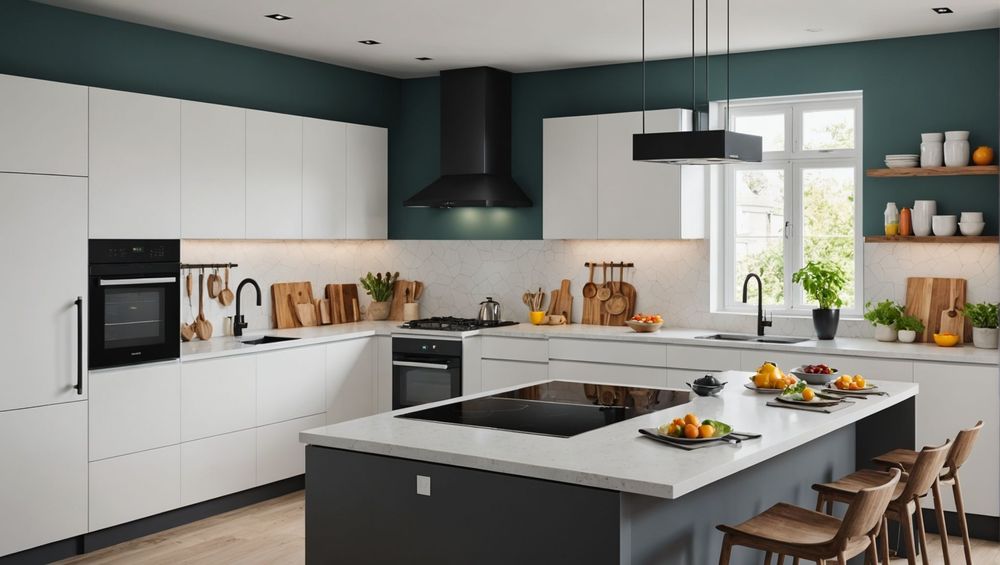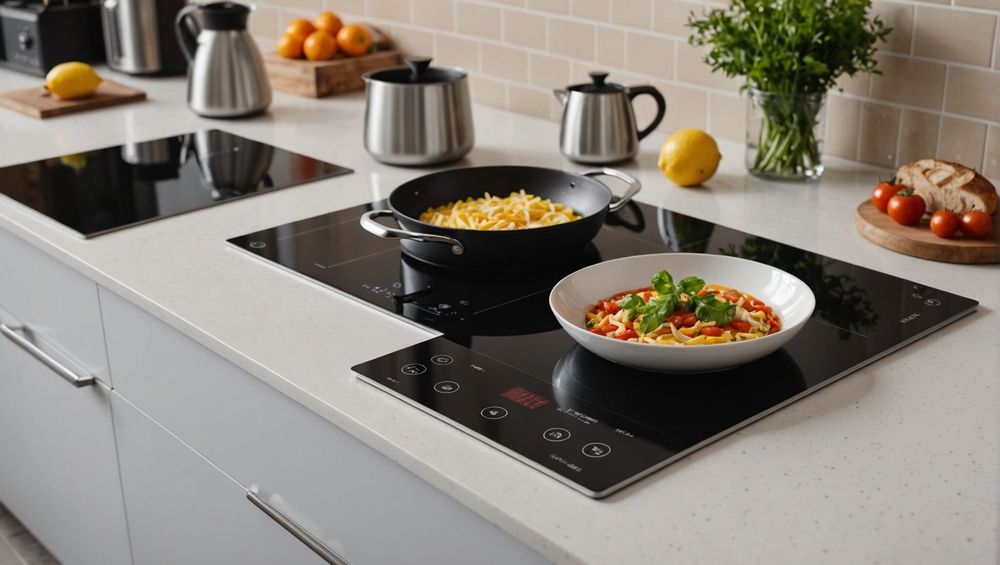The Pros and Cons of Induction Cooking
Induction cooking has gained popularity in recent years due to its efficiency and modern appeal. This cooking method uses electromagnetic energy to heat pots and pans directly, rather than heating the surface of the stove. While there are undeniable benefits to induction cooking, such as speed and safety, there are also some disadvantages to consider. In this article, we will explore the pros and cons of induction cooking to help you make an informed decision about whether it’s the right choice for your kitchen.
Advantages of Induction Cooking

Induction cooking offers several advantages that make it stand out from traditional gas or electric stoves. Here are some of the key benefits:
- Efficiency: Induction cooktops heat up faster than gas or electric stoves, reducing cooking time and energy consumption.
- Precision: Induction cooking allows for precise temperature control, providing better results when cooking delicate dishes.
- Safety: The cooktop remains cool to the touch during and after cooking, significantly reducing the risk of burns.
- Easier Cleanup: Since spills do not burn onto the cooktop, cleaning is generally quicker and easier.
- Modern Aesthetics: Induction cooktops often feature a sleek, modern design that can enhance the look of any kitchen.
These advantages contribute to why many homeowners find induction cooking to be a preferable choice. The efficiency and safety features, in particular, are notable selling points, especially for those who prioritize a fast-paced kitchen experience.
Disadvantages of Induction Cooking
Despite the numerous benefits, there are also some drawbacks associated with induction cooking. Here are a few of the main disadvantages:
- Cost: Induction cooktops can be more expensive than traditional gas or electric ranges.
- Cookware Compatibility: Only ferrous (magnetic) cookware can be used on induction stoves, which may necessitate a complete overhaul of your existing pots and pans.
- Noise: Some users report a humming or buzzing noise when using induction cooktops, which might be distracting in quiet households.
- Power Requirements: Induction stoves often require a dedicated electrical circuit, which might not be available in all homes.
- Sensitivity: The touch-control panels can be sensitive and may respond unintentionally while cleaning or due to moisture.
These disadvantages can be significant potholes for those considering a switch to induction cooking. It’s crucial to weigh these drawbacks against the advantages to determine if it fits your cooking style and lifestyle.
Energy Efficiency of Induction Cooking

One of the standout features of induction cooking is its energy efficiency. Induction cooktops use about 90% of the energy generated, compared to 40% for gas stoves and approximately 74% for traditional electric burners. Here’s how it works:
- The induction cooktop generates a magnetic field that directly heats the cookware.
- As a result, heat is transferred instantly, leading to reduced cooking times.
- This efficiency leads to lower energy bills over time and is more environmentally friendly.
- The accurate temperature control reduces the risk of overheating or burning food, minimizing waste.
- Many induction cooktops are equipped with energy-saving features, such as timers and automatic shut-off functions.
Overall, the energy efficiency of induction cooking not only benefits the environment but also enhances cost savings for consumers, making it an appealing option for eco-conscious individuals.
Impact on Cooking Experience
The cooking experience can significantly change when switching to induction cooking. Many users report that the immediacy and responsiveness of heat changes the way they prepare meals. Cooking becomes more straightforward and enjoyable. Here’s how induction cooking impacts the cooking experience:
- Instantaneous heat adjustments allow for sophisticated cooking techniques, such as tempering chocolate or simmering sauces.
- Cookware remains steady in temperature, enabling better cooking precision.
- The cool surface reduces the chance of accidental burns while maneuvering around the kitchen, which is especially beneficial for novice cooks.
- Many induction cooktops feature smart technology that can assist with cooking times and techniques.
- The clean design of induction cooktops can make cooking and entertaining feel more upscale and modern.
These features, combined with the fun of quick cooking, lead many to find that the overall experience of preparing meals becomes more enjoyable and less stressful.
Conclusion
Induction cooking offers a modern solution for home chefs seeking efficiency, safety, and cutting-edge technology. While it comes with certain disadvantages, such as cost and cookware compatibility, the benefits can greatly improve your cooking experience and energy savings. Whether or not induction cooking is the right choice for you ultimately depends on your cooking style, budget, and preference for kitchen technology. By weighing the pros and cons, you can make the best choice for your culinary pursuits and kitchen setup.
FAQ
1. Can I use my existing pots and pans on an induction cooktop?
No, only cookware made of magnetic materials is compatible with induction cooktops. You may need to invest in new pots and pans if your current ones do not work.
2. Is induction cooking safe for children?
Yes, induction cooking is generally safer for children, as the cooktop remains cool to the touch, minimizing burn risks.
3. Do induction cooktops make noise while cooking?
Some users report a humming or buzzing noise, which is normal and can vary between different cooktop brands and models.
4. Can I install an induction cooktop myself?
It is recommended to have a professional electrician install an induction cooktop, especially if it requires new electrical wiring or circuits.
5. How do induction cooktops impact energy costs?
Induction cooktops are energy-efficient and can lead to lower energy bills over time due to faster cooking times and more direct heat transfer.
